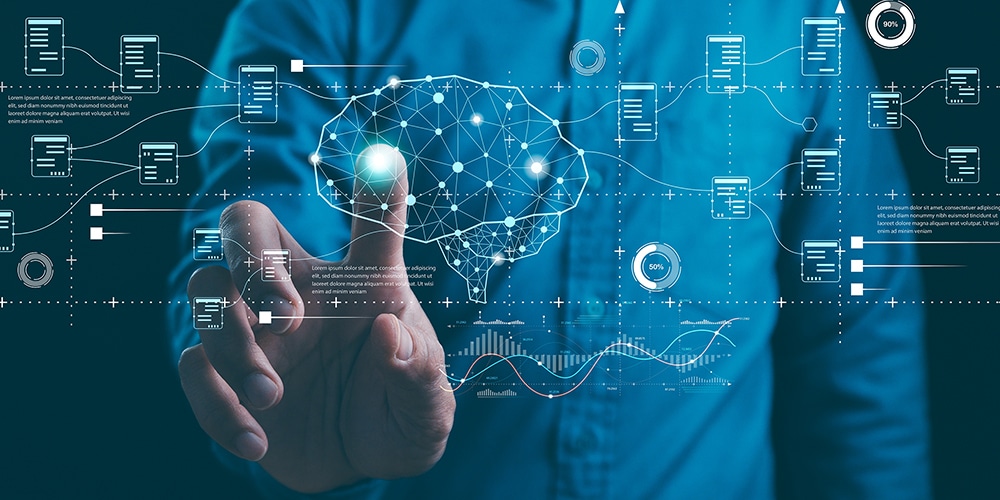What is RAG, and How Can It Give You Better Answers from Generative AI?

The field of Generative AI is rapidly evolving, offering exciting possibilities for tasks like content creation, chatbot development, and research assistance. However, a key challenge for large language models (LLMs) remains – ensuring factual accuracy and contextual relevance in their responses. This is where Retrieval-Augmented Generation (RAG) comes in, offering a powerful approach to elevate the quality of information generated by AI systems.
But how exactly does RAG work? And what makes it a superior solution for industries relying on generative AI? This blog explores the key components of RAG, its benefits, real-world applications, challenges, and future potential.
Understanding RAG: Retrieval-Augmented Generation Explained
So, what is RAG (Retrieval-Augmented Generation)? At its core, RAG combines two powerful AI functions: information retrieval and text generation. While traditional generative models like GPT-4 produce responses based solely on their training data, RAG allows these models to access external databases, search engines, or documents to retrieve the most relevant information.
What are RAG’s main components? The RAG architecture typically consists of two essential parts: the retrieval mechanism (the retriever) and the generative model (the generator). The retriever is responsible for searching vast datasets or knowledge bases, finding information that directly addresses the user’s query. This information is then passed to the generative model, which produces a coherent, human-like response using both the retrieved data and its pre-trained knowledge.
The Key Components of RAG: How Does It Work?
The RAG pipeline can be understood by examining how the retriever and the generator interact.
What role does the retriever play in RAG pipelines? The retriever is a sophisticated search algorithm designed to filter out the most relevant information from a knowledge source, which could be the web, internal company documents, or any structured database. By narrowing down the search space, the retriever ensures that the generative model has access to the most up-to-date and contextually relevant information, overcoming the limitations of pre-trained language models that can’t access real-time data.
Once the retriever locates this data, the generative model integrates it into the response. This approach allows for knowledge integration, making the AI not only more knowledgeable but also capable of answering highly specific questions with more precision.
How does RAG leverage external knowledge for NLP tasks? By integrating both retrieval and generation, RAG bridges the gap between static knowledge and dynamic information needs, making it especially useful for natural language processing (NLP) tasks such as answering complex questions, summarizing documents, or even providing real-time insights based on newly available data.
Benefits of Using RAG in Generative AI Applications
One of the standout advantages of RAG is its ability to improve the quality of responses. Because the system accesses relevant, real-time data through retrieval, its answers are more accurate and reflect the latest information. For example, while a standard generative model trained on historical data might struggle to answer questions about recent events, a RAG model can retrieve information from external sources, providing up-to-the-minute responses.
Another key benefit is context awareness. When dealing with ambiguous or open-ended questions, traditional generative models may generate responses based on incomplete context. RAG improves context sensitivity by pulling in additional supporting data to ensure a richer and more relevant response.
For businesses, RAG models offer real-time data access, enabling companies to enhance customer service, research capabilities, and personalized content creation.
What are the benefits of using a RAG chatbot? In customer support scenarios, RAG chatbots can pull real-time data from a knowledge base, offering more accurate answers than models trained exclusively on past data. Additionally, they can be trained to retrieve personalized information about a specific customer, improving customer experience and increasing satisfaction.
Use Cases in Various Industries
RAG is making a significant impact across industries. Let’s look at a few examples:
- Customer Support Automation: Companies are increasingly deploying RAG-powered chatbots that can pull from internal knowledge bases or external sources, providing instant and accurate responses to customer queries.
- Content Creation Tools: Journalists, researchers, and marketers use RAG to generate more accurate articles, reports, and social media content by retrieving the latest facts or quotes from the web.
- Research Assistance: In academic settings, RAG helps scholars gather real-time data from research papers, journals, and other sources to create more informed analyses.
- Personalized AI Responses: RAG can pull data relevant to individual users, creating more customized and context-specific interactions, which is especially useful in healthcare and education industries.
Challenges and Limitations
Despite its advantages, implementing RAG comes with its own set of challenges. One major issue is the complexity of integrating retrieval systems with generative models in real-time without introducing latency. How can companies ensure that RAG systems work efficiently without slowing down responses?
Another challenge is ensuring the relevance of retrieved data. The quality of a RAG system’s response depends heavily on the retrieval mechanism, and poorly tuned retrievers can provide irrelevant or outdated information, reducing the accuracy and usefulness of the response.
Additionally, data privacy concerns arise when integrating external knowledge into AI models, especially when personal or sensitive data is being retrieved.
The Future of Generative AI with RAG Technology
As AI research continues to evolve, RAG is poised to play a key role in the future of generative AI. Advancements in machine learning techniques will likely reduce latency, making RAG models faster and more efficient. Furthermore, the growing availability of real-time data sources will only enhance the ability of RAG models to deliver precise, contextually relevant responses.
What does the future hold for RAG in generative AI?
Beyond customer service and content creation, we can expect RAG to expand into sectors like healthcare, where real-time data retrieval could assist doctors in diagnosing patients or recommending treatments based on the latest medical research. RAG technology will likely improve the user experience by delivering personalized, on-demand information, creating more engaging interactions across industries.
In today’s fast-paced world, access to real-time, relevant information is crucial for staying ahead. RAG technology offers a powerful solution for enhancing the accuracy and depth of generative AI responses, empowering businesses to elevate customer support, streamline content creation, and drive smarter decision-making. By integrating RAG into your systems, you can harness the latest advancements in AI to deliver superior outcomes across various applications.
At Integra, our AI experts are ready to help you implement RAG technology tailored to your specific needs. Whether you’re looking to optimize your workflows or enhance user experiences, we provide the tools and expertise to bring RAG to life within your organization. Connect with us today to explore how our AI solutions can transform your business operations.
Recent Blogs

Preprints, Transparency, and the Future of Scholarly Publishing: Why Journals Should Lead the Shift

From Disruption to Direction: Finding Focus in a Transforming Industry


